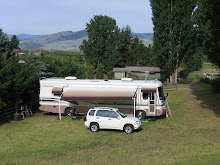



The Intracoastal Waterway is a 4,800-km (3,000-mile) waterway along the Atlantic and Gulf coasts of the United States. Some lengths consist of natural inlets, salt-water rivers, bays, and sounds; others are man-made canals.
The waterway runs for most of the length of the Eastern Seaboard, from its unofficial northern terminus at the Manasquan River in New Jersey, where it connects with the Atlantic Ocean at the Manasquan Inlet, to Brownsville, Texas. The waterway is toll-free, but commercial users pay a fuel tax that is used to maintain and improve it. The ICW is a significant portion of the Great Loop, a circumnavigation route encircling the Eastern half of the North American continent.
The creation of the Intracoastal Waterway was authorized by the United States Congress in 1919. It is maintained by the United States Army Corps of Engineers. Federal law provides for the waterway to be maintained at a minimum depth of 12 ft (4 m) for most of its length, but inadequate funding has prevented that. Consequently, shoaling or shallow water are problems along several sections of the waterway; some parts have 7-ft (2.1-m) and 9-ft (2.7-m) minimum depths. The waterway consists of two non-contiguous segments: the Gulf Intracoastal Waterway, extending from Brownsville, Texas to Carrabelle, Florida, and the Atlantic Intracoastal Waterway, extending from Key West, Florida to Norfolk, Virginia (milepost 0.0). The two segments were originally intended to be connected via the Cross Florida Barge Canal across northern Florida, but this was never completed due to environmental concerns. Additional canals and bays extend a navigable waterway to Boston, Massachusetts.
The Intracoastal Waterway is a favourite route for yachts heading south (Snow Birds) to spend the winter in Florida or to depart for a Carribean cruise or beyond. During the spring, many of these boats head north for the summer period.

No comments:
Post a Comment